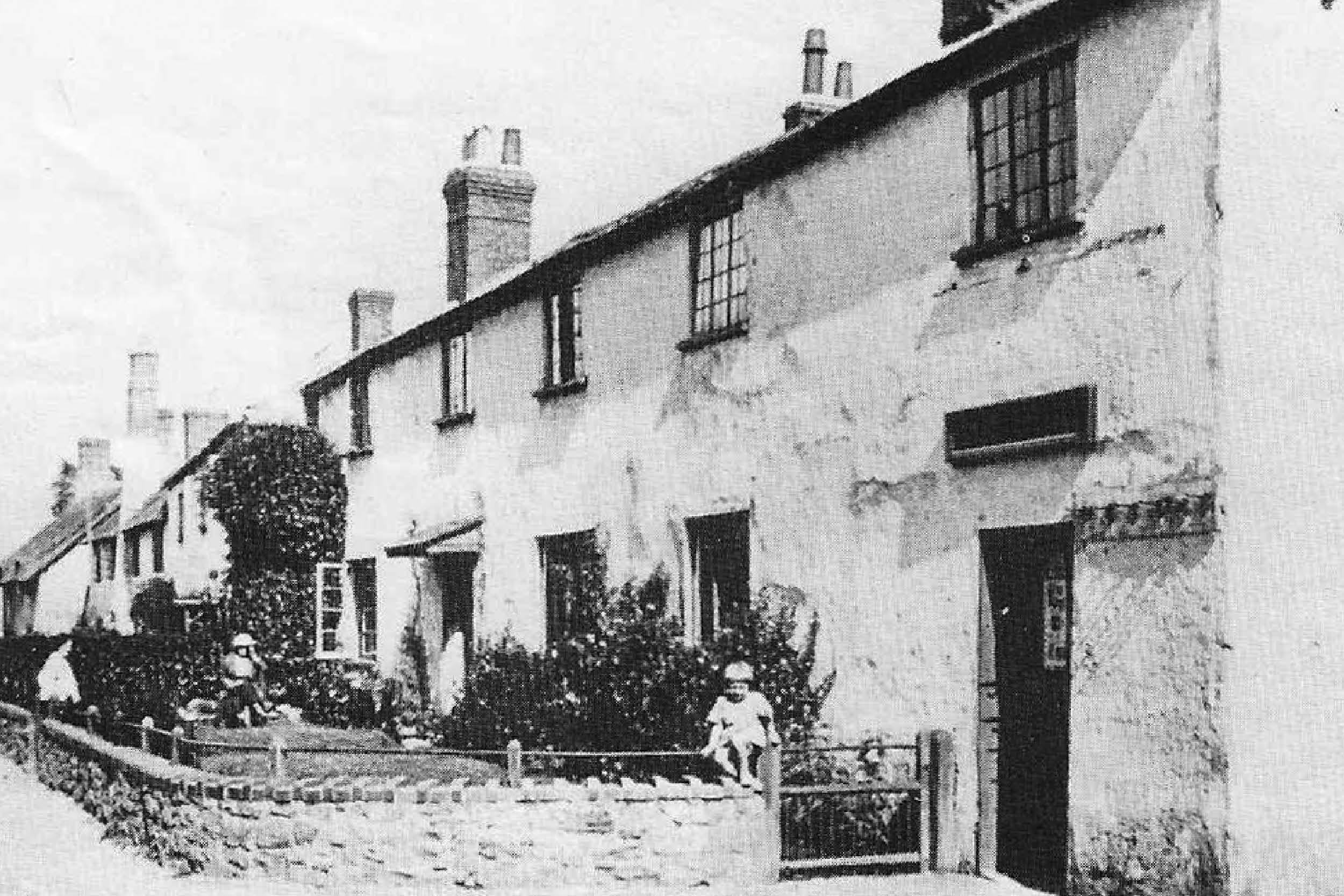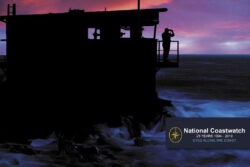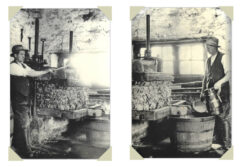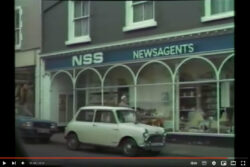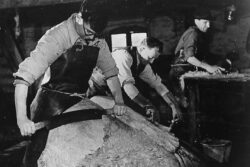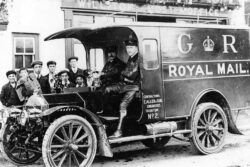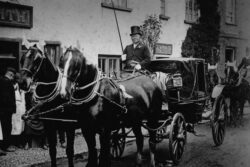Last month’s article ended in Long Street and before we move from it I should mention that the Hole family’s photographic business had its studio in Long Street.
It spanned three generations until the last Hole retired in 1974. The first one Henry H.Hole, who was one of the longest serving tradesman of his day, started in 1856 and died, aged 63yrs in 1900. Once the business was established the firm had three studios in Williton, Watchet and Minehead. Many archival photos of Williton and surrounding area were taken by them.
The earliest Wesleyan Methodist meetings in Williton took place in the home of John and Mary Stoate in Fore Street which was licenced for worship in 1810. Then in 1883 a new Chapel and Schoolroom were built in Tower Hill designed by the Lancashire born architect Robert Curwen, who designed a number of Wesleyan Chapels and built by J.Chibbet and Sons.
The Chapel was officially opened in 1884.These handsome sandstone buildings makes a big statement and are listed. The chapel has three stained glass windows, two of which commemorate the dead of the last two World Wars. The chancel has a pointed arch carried on marble columns and a gallery carried on cast iron Corinthian columns. The Schoolroom was used not only for Sunday School and the Band of Hope but for sales and concerts given by The Williton Choral Society. In 2003 the Chapel was modernised to make it into a community centre and has since been sold. The Methodists continue to meet in Williton.
The open space at the end of High Street with seats on was called Bellamy Corner because there once stood houses on the site in which there was a jewellery business run by a man called Bellamy. He closed down in the 1940s.
Moving on to Gliddons premises in Bank Street which was formerly an agricultural Engineers and Workshop. This was the most important C19 industrial operation in Williton .John Gliddon founded the Swain Street Foundry in Watchet in 1833 which ran until 1946.The area on which they stored their agricultural machinery was the one time auction market site. In the Mediaeval period the settlement was essentially agricultural with a large number of small farms. Quarrying of building materials supplemented the agricultural economy in historical times.
The attractive former Police Station built in 1858 designed by John Norton included not only the Superintendent and Sergeant’s accommodation but cells and a courtroom. Later it incorporated the library. Recently it was put up for sale. Sadly its blue light with heritage glass and the word police painted on it was recently removed despite it being a listed building. Finally modern blue glass was re-instated in the lamp minus ‘police’. Seems someone thought it might be be mistaken as still being a functioning Police Station despite no official notice outside or even a plaque with’ The Old Police House ‘ on it! This is how our heritage gets lost.
Dragons form an essential part of West Somerset folklore. St Caradoc was said to have tamed a dragon which had menaced King Arthur’s people around Carhampton, while a dragon that had allegedly crept from the Quantocks and menaced the area as far as Williton was finally slain at Norton Fitzwarren.
It was in the Saxon period that Williton emerged as a distinct settlement. Some say it acquired its name from the Willet stream formed in the C12 by the joining of two streams, one from Stream and the other from Doniford which runs behind the church. The main settlement was around where the Parish Church stands but over time has migrated north-east. This area still has a timeless feel about it. In the C10 there was a Royal hunting lodge and chapel there and so as a Royal administrative centre it must been of some status.
The spelling of the name has taken many forms. As far back as The Domesday Book in which three properties are registered with different village spelling- Wellutune, Welletone, Willetone. Later in AD 1207 Radulphus de Wileton is recorded as having paid one mark for a marriage licence. Other variations ranged from Willington to Widiton, Weleton,Wyletone, Welwetone and Guillitone (probably a french spelling as G was pronounced W). In 1535 on one map the church is shown as being in Wyllyton! So take your pick!
It is likely that there was a wooden building with thatched roof erected as a place of worship for the Saxon kings and their knights when they came to the Royal Hunting Lodge. The first record of a chapel on the present site was one founded by Robert Fitz Urse. He was the brother of Sir Reginald Fitz Urse who in C12 owned the Manor House, which stood on a site SW of the church beyond the cottages in front of the stream.
When at the King’s Court in France Sir Reginald overheard King Henry, who had been drinking heavily, say one evening “Who will rid me of this turbulent priest ?” referring to his one time friend and now arch enemy, Thomas a’ Becket , the Archbishop of Canterbury, he conspired with three other knights to do just that.
As leader he directed them each to ride separately to the French coast and told them where they should meet up on the other side. Together they rode to Canterbury Cathedral where they murdered Thomas a’ Becket on the altar steps on 29th December 1170.
The repercussions of their action was enormous not just on the Fitz Urse family- Reginald was no longer allowed at Court- the King had to make a worthy act of repentance and the history of Williton Church was changed. Reginald in contrition for his action handed the Manor House over to his brother Robert and the Knights Templar and left.
Robert feeling that he too should atone for his brother’s sin gave arable land and property to St Decuman Church in Watchet as well as an acre of land for a dwelling where the Chaplain of Wileton Chapel could live. From then until 1902 St Peter’s became a chapel-of-ease, as part of the parish of St Decuman.
The chapel was originally dedicated to All Saints but appears to have become St Peter in the 1700’s. Its main body of nave and chancel is Mediaeval. There may be remains of Robert’s chapel under the present day structure. The south aisle was added in 1810-12 and incorporates some Elizabethan windows that had been in the original south wall of the nave.
The church was restored in 1856-9 when the vestry and north aisle were added. The roof was renewed and the bells rehung in a tower with a small spire, which sadly did not last long as it was blown down in a violent storm. A wooden bellcot housed the bells until a stone was built in 1896. The octagonal font, dated 1666, is of particular interest as it is made from Watchet alabaster.
Williton once had five crosses in various locations. Quite why, it had so many is not known but the remains of one still stands on Glebe land opposite the north door of the church.
That land is known as ‘Chapel Green’. The story goes that the cross was vandalised by a raiding party which rode this way to Orchard Wyndham during the Civil War.
For the archaeologists The Battlegore Bronze Age Burial Chamber, a scheduled ancient monument is fascinating. It consists of three round barrows and possibly a long chambered barrow. George Grey excavated the site in 1931 and found a large urn containing cremated remains of a human in one of the barrows. Various bronze items have been found in the vicinity, such as a broken dagger,a rapier, a spearhead and a winged axe.
There is so much more to Williton than meets the eye and much that I have not touched upon like the Station with its LB’s, The Orchard Wyndham Estate , Coxes Newsagents and Free Press founders, all of which would warrant an article on their own. There are many other interesting buildings and tucked away areas to explore but hopefully you may have been inspired to visit and see for yourself.
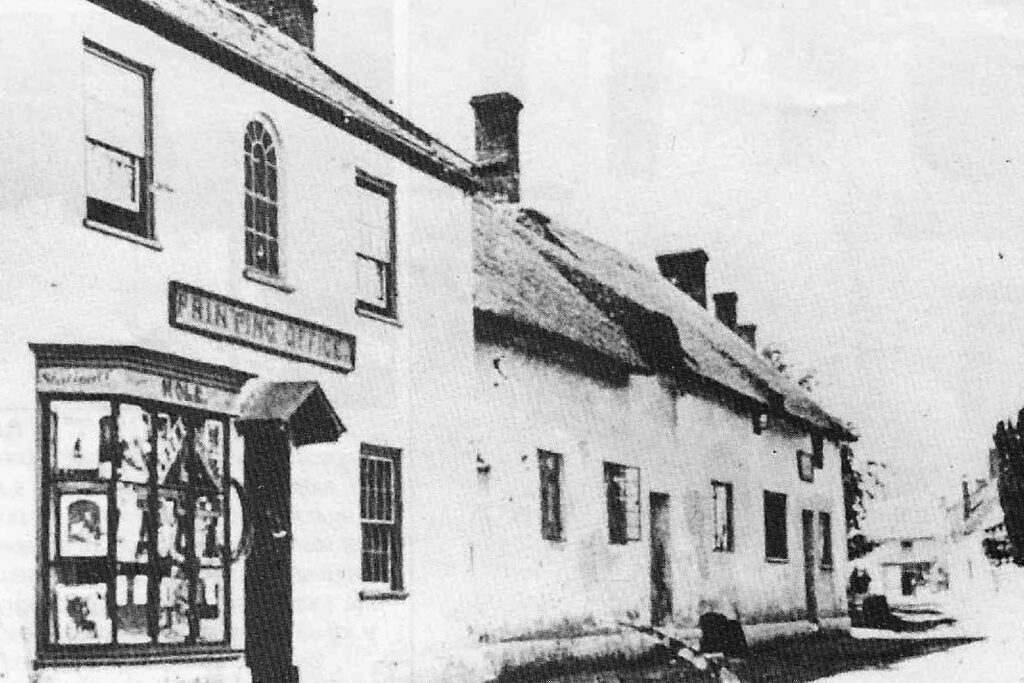
Compiled by Sally Bainbridge on behalf of Minehead Conservation Society.
Buy the book! Minehead & Beyond
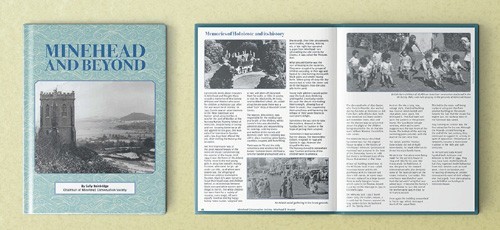
This book is a compilation of articles written for this magazine by Sally Bainbridge on behalf of Minehead Conservation Society. It contains information about the richness of West Somerset’s history; culture; people; heritage; traditions and beautiful and varied landscape. The book costs just £5 and all profits go to Minehead Conservation Society.
Available to buy from AR Computing, Park Lane Home Furnishing (in their Park Lane shop), Minehead Tourist Information Centre and Townsend House (Monday am).
Office: Townsend House, Townsend Road, Minehead TA24 5RG (01643 706258) E-mail: [email protected]
